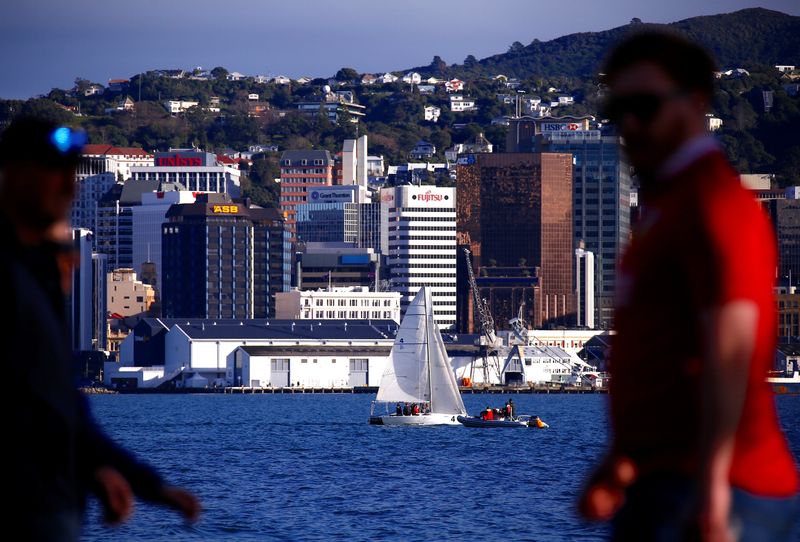By Lucy Craymer
WELLINGTON (Reuters) - New Zealand's gross domestic product (GDP) returned to growth in the final quarter of 2021 as the economy emerged from COVID-19 lockdowns, and economists said the data supported expectations the central bank would raise interest rates further.
Production-based output grew by 3.0% in the quarter, Stats NZ said on Thursday. That was a touch below economists' median expectations of a 3.2% rise and a sharp turnaround from a revised 3.6% fall in the September quarter, when lockdowns had curbed activity.
The Reserve Bank of New Zealand (RBNZ) last month forecast growth for the December quarter at 2.3%.
"The Q4 GDP data reflect a robust, albeit very stimulated economy," ANZ economists said in a report.
While there were a number of uncertainites on the outlook, the main concern was rising inflation in New Zealand that would require the RBNZ to further tighten policy, they added.
Annual GDP rose 3.1%, a little below a Reuters poll forecast of a 3.3% rise.
The RBNZ has already raised interest rates three times since October.
"Given that the rebound in activity in Q4 was above the RBNZ's expectations, today's data will keep the Bank on its hiking path," Ben Udy, economist at Capital Economics, said in a note.
OMICRON OUTBREAK
Economic growth improved as New Zealand's largest city, Auckland, moved out of a lengthy lockdown that had hit retail, manufacturing, construction and recreational activities in the prior quarter. Other parts of the country had also experienced shorter lockdowns in the third quarter.
Consumer and government spending were strong in the fourth quarter as was business investment, while trade was a drag as the country sucked in more imports, the data showed. There was also a big drag from inventories as companies ran down stocks to meet demand.

New Zealand's economy is being hit again this year as the country experiences its first significant nationwide outbreak of coronavirus infections as the Omicron variant spreads.
Although there are few restrictions in place, growing case numbers and hospitalisations have tempered people's desires to go out while sickness and isolation requirements are hurting some manufacturing sectors.